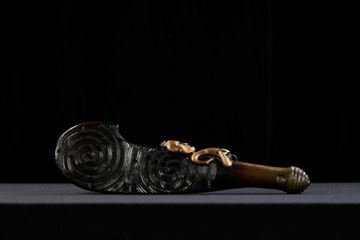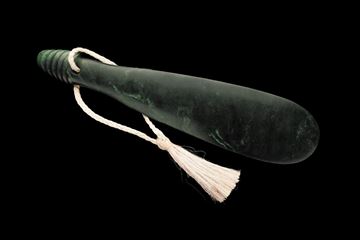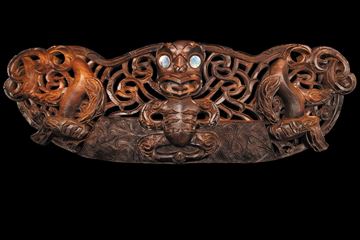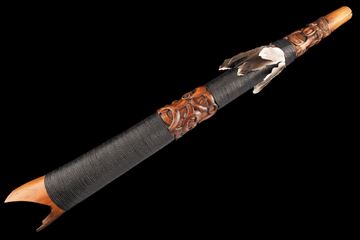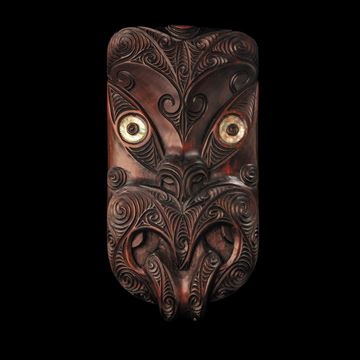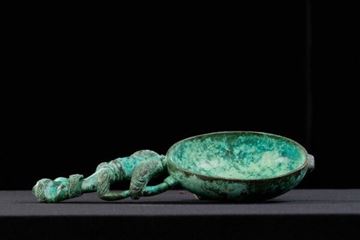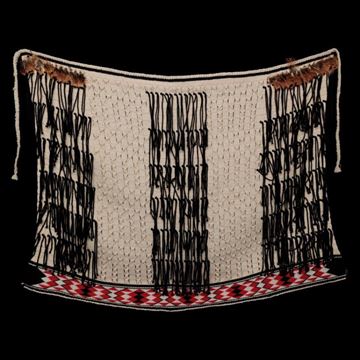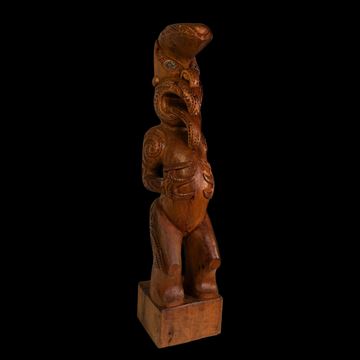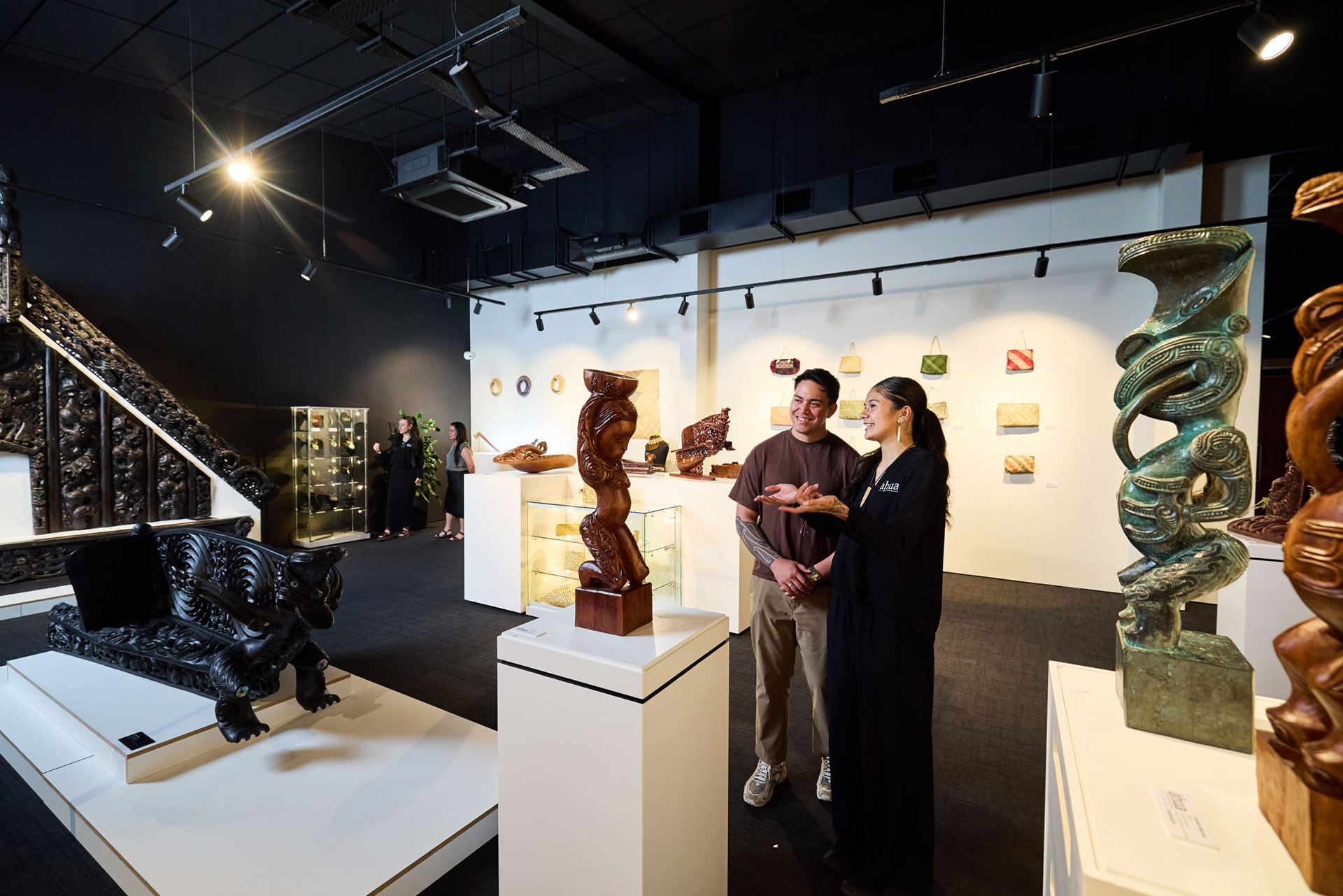
Āhua Gallery
Select Subcategory
Wahaika - Black w Bronze (ed. 1/6) - 2487FD
The literal meaning of wahaika is: ‘waha’ (mouth); and, ‘ika’ (fish). It was specifically named because of the gap on the side of the weapon. Wahaika were used in close hand-to-hand combat to defect blows, and to strike the chest, head and wrist. Many wahaika have a small figure carved on their side called a pūkaiora which represented a tribal war God that would guard over the warrior during battle. The whiti or small head at the end of the handle was also a form of guardian. Wahaika are usually made from native hardwoods or whalebone.
$7,500.00
Mere Pounamu - 6835HW
Mere Poumanu (hand weapon) like the patu, were often sharp at their forward edge and were used with thrusting, jabbing, and swinging blows. Māori weapons are notable for their fine sculptural form and were designed for close hand-to-hand combat. No other stone-age war implements surpassed them in deadly effectiveness. The mere pounamu is the most valuable of the Māori shorthand weapons.
Material: Pounamu (Kawakawa).
Measurements: 435mm x 97mm x 20mm
$6,500.00
Pare - 4770KA
Pare were traditionally installed above thew front door of a house belonging to someone of high tribal standing and can also be found across the top of the main doorway into a meetinghouse. Customarily pare delineated spaces, particularly those between tapu (restricted) and noa (un-restricted) environments.
Material: Tōtara
Measurements: 1030mm x 360mm x 80mm
$5,900.00
Pūkaea - 4798TJ
The pūkaea was the largest of the Māori trumpets, ranging in size from one metre (3.2ft) to over two meters (3.4ft) in length. They were made in two pieces and bound together with the roots of the kiekie (climber). Many pūkaea were carved and they often belonged to the chief of a tribe. They were typically used to call the tribe together.
Material: Matai
Measurements: 600mm x 70mm x 60mm
$5,900.00
Wheku - 6638CF
In Māori carving there are three predominant designs for heads: the 'wheku' with its long eyes; the 'koruru' with its round eyes; and the 'ruru', which also has round eyes but with a point at the top. The different designs were used by carvers to illustrate the character of the subject they were carving. The long eyes of the wheku were often used to depict a squint or frown.
The wheku was commonly used in Māori carvings by some tribal areas and was also placed on the apex of the Māori meeting house to represent an eponymous ancestor.
Material: Tōtara (Red Pine)
Measurements: 250mm x 130mm x 30mm
$4,900.00
Kākahu (Contemporary) - 1731RA
The kākahu takes inspiration from traditional Māori cloaks. A kākahu is mantle of prestige and honour. This kākahu is made from mirowhiti miro (mop yarn) also incorporating materials that represent different types of kākahu including but not limited to kahu huruhuru (feathers) and tāniko.
Material: Cotton, Mop Yarn, Wool, Feathers
Measurements: 1016mm x 762mm
$4,400.00
Tekoteko - 4813HG
The tekoteko is a stylised representation of the main progenitor of a tribe and is the most focal point of the whare whakairo (carved tribal meeting house). They can be found – on traditional meeting houses – either at the highest point at the front apex of the roof or at the front central post. They can also be found at the base of the poutokomanawa (the main central ridge support post) of the house.
Material: Tōtara
Measurements: 865mm x 210mm x 180mm
$4,200.00

